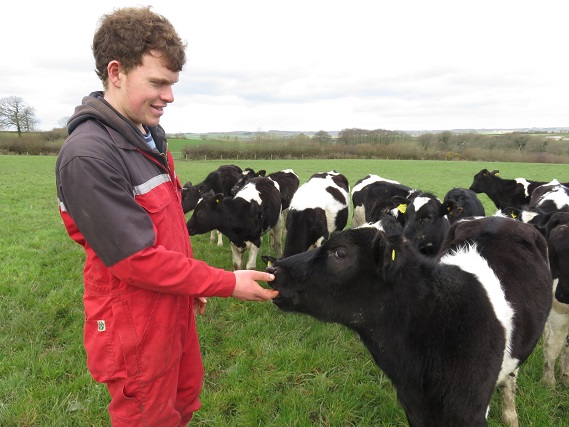Plenty of grass in mid Devon
Drilling the right mixture for the right job yields results
West Middlewick Farm lies on 81 hectares between Dartmoor and Exmoor in Nomansland, just outside Tiverton in Devon. A truly mixed farm, incorporating dairy, beef, sheep (Poll Dorset ewes lambing at Christmas), chickens, a few pigs, grass and arable, it is also welcomes tourists into its five high specification log cabins, two log pods (a pyramidal wood cabin), 30-berth touring caravan and camping site and bed and breakfast in the farmhouse.
The tourism and farming enterprises go hand in hand – both sustaining each other, but having good grass drives both businesses.
The 70 British Friesian cows calve mainly in spring and are milked twice a day in an eight-stall shippen, yielding an average 6,500 litres a day at 4.55% butterfat and 3.59% protein. Most of the milk is sold to Arla for cheese. Last year John Gibson re-obtained a licence to sell raw milk, which his father had before him, and has found many willing customers, including local residents and holidaymakers.
Out in the fields, 19-year old son Dan is taking the lead on making sure there is enough grass for the cows to graze and cut for baled silage.
“We just had enough silage for the dairy cows to last the winter, but with all the cattle still inside for most of April, we did have to buy in 35 bales for the beef cattle,” explains Dan Gibson.
 Dan Gibson with the heifers on new land taken on this year
Dan Gibson with the heifers on new land taken on this year
“We reseeded 20 hectares of a long-term dairy grazing ley late in October and were lucky with the weather. The seed germinated really well and the sward has been perfect for turning the cows out to strip graze this spring.”
With the heavy clay soil and rainfall averages more than 1,000mm a year, conditions for reseeding can be challenging – but no short cuts are taken. Working closely with John Harris, Dan Gibson walks the fields regularly and discusses the options for what to grow and how to establish it.
There is a crop rotation of spring barley, which is harvested, rolled and fed to the cows, forage rape - usually grazed by dry cows, then back to a grass reseed in the autumn. This ties in well with the Mid Tier Stewardship scheme.
All the fields are regularly soil tested and limed to maintain pH levels at 6.5. Phosphate and potash is applied at drilling.
Seedbed preparation is seen as the key to successful establishment. After ploughing, ring rolls are used with leveling boards as a first pass. Then the field is harrowed to make a fine seedbed. It is then rolled before the seed is broadcast, then rolled twice more to get good seed-to-soil contact.
Cutting leys are given 100kg/ha of nitrogen before first cut and 80kg/ha before second cut. Sulphur is applied at every application. Muck is also spread across the cutting leys.

On a rented field a mile away, Dan has sown a dedicated cutting ley for silage. Sown three years ago in the autumn, this was a mixture of red clover and two festuloliums – Lofa and Perseus, which was sown at a rate of 14kg/ha.
“The red clover in this silage ley reduces the need for nitrogen fertiliser and it keeps on growing,” says Dan. “We usually take five cuts off this field and last year had taken the first one in mid April.
“We mow without a conditioner, turn, spread and wilt it for up to 48 hours, and row it up ourselves. This means we can go when the grass is ready, which is before it heads to preserve feeding quality. We don’t scalp the grass – we leave a two-inch stubble so the plant can recover more quickly. The contractor then comes in to make the bales and wrap them. We make a thousand bales each year.”
This article first appeared in British Dairying magazine in May 2018.
